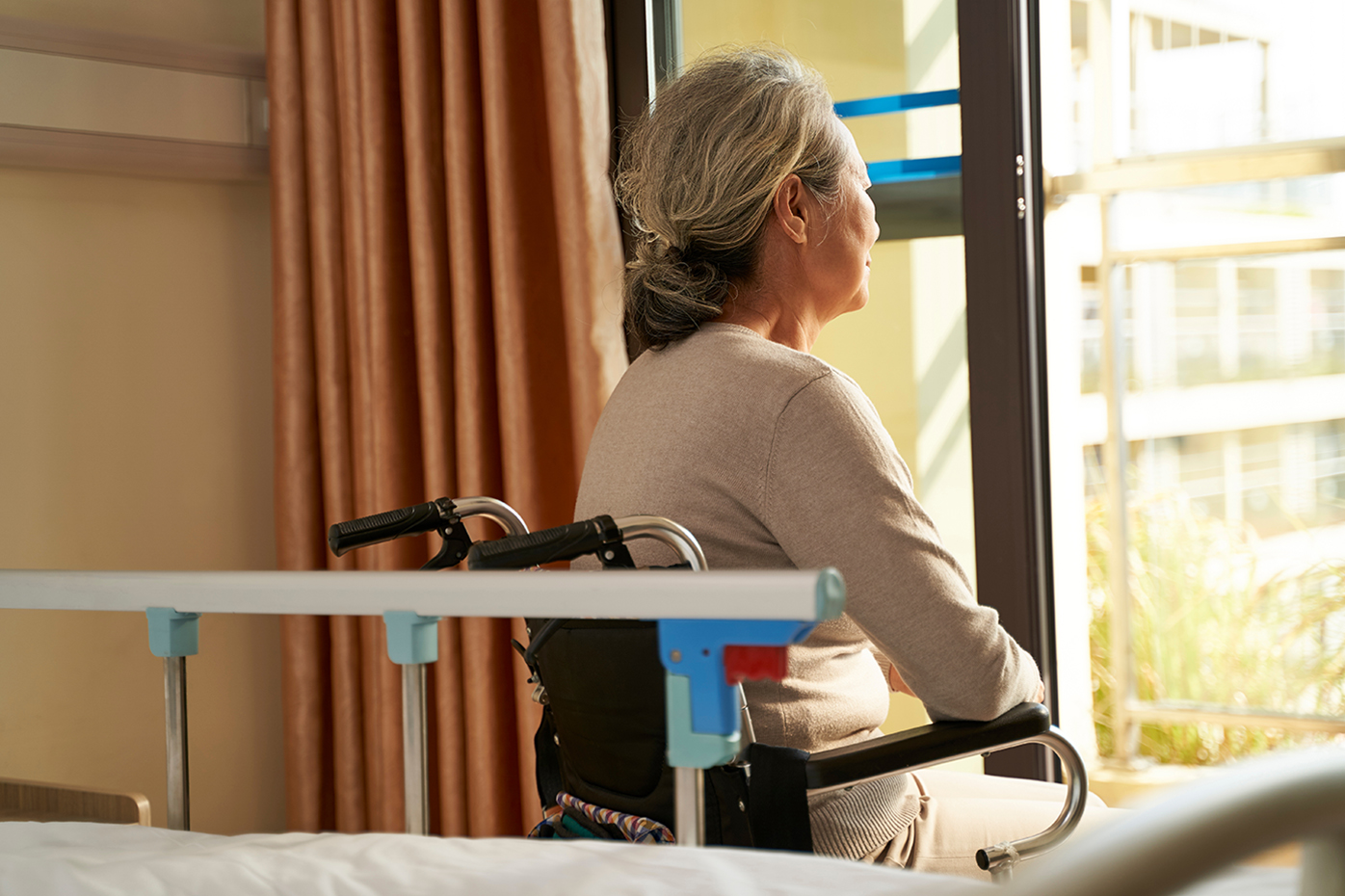If one is the loneliest number, then one in eight might be the loneliest statistic. By 2030, one in every eight of the earth’s inhabitants will be over age 65,[1] and attempts to address the current coronavirus pandemic are shining a particularly punishing light on a silent epidemic of social isolation among this older-age cohort.
While public health experts agree that social distancing is the best path to protecting particularly vulnerable elderly populations from COVID-19, the prescription comes at a terrible cost. According to the Brigham Young University meta-analysis Loneliness and Social Isolation as Risk Factors for Mortality[2], lack of social connection heightens health risks as much as smoking 15 cigarettes a day. Researchers have also linked “perceived” or self-identified social isolation with depression, poor sleep quality, impaired executive function, accelerated cognitive decline, poor cardiovascular function, and, perhaps most urgently, impaired immune system functioning, at every stage of life[3]. Older adults with functional limitations and low family engagement are at particular risk, while those with more social interaction and less family strain report both lower levels of loneliness and improved physical health.[4]
Loneliness, it seems, can threaten health and well-being, yet far too many of the elderly were aging in isolation long before the novel coronavirus outbreak. The U.S. National Health Interview Survey (NHIS), one of the nation’s largest in-person household health surveys, reveals a much higher all-cause mortality experience for older adults who also reported dissatisfaction with their lives and loneliness based on a multivariate model that adjusts for age, sex, smoking, disease history, health status, and income.[5]
The Power of Aging in Place
Evidence suggests that relocating to any form of more institutionalized care setting can disconnect individuals from their loved ones and communities, and these eldercare options, such as residential care, assisted living and nursing homes, are becoming less affordable in many advanced economies. A recent poll by the American Association of Retired Persons (AARP) found that 87%[6] of retirees expressed a desire to “age in place” or remain at home.
Preserving social engagement and helping seniors age at home may offer the best path to maintaining health in old age, but how can the public health and insurance community prevent loneliness and therefore reduce long-term care utilization in this growing geriatric population?
As the AARP noted[7], “To the degree that we have created places that inhibit, discourage or outright prevent older adults from interacting with others as they age, due to a loss of mobility or even poor home design, we contribute to the pandemic of social isolation rather than solving for it.”
Reconnection Through Technology
If physical barriers isolate seniors, could technology bring the outside world back inside the home and reconnect individuals with the community? A host of new eldercare monitoring and management companies are seeking to find out. Interactive voice-activated smart home features and connected mHealth or mobile health applications (on smartphones and tablets) can present older adults with a series of daily medication adherence alerts, calendar reminders, and wellness questions about mood, sleep quality, or physical activity – all factors that can be precursors to declining mental health – as well as introduce a battery of tests to assess the ability to perform activities of daily living (ADLs).
The answers can prompt emergency interventions or additional resources. For example, RGAX, the transformation engine of RGA, is exploring a relationship with a U.K.-based startup that produces small plug-and-play devices for the home that assist older adults in developing the self-management skills needed to more successfully “age in place.” The device records daily routines, provides alerts, and offers virtual care – all based on the patient’s individual care plan. Similarly, a flood of wearable solutions have been designed to support seniors’ independence and supplement smart home technology.
Moreover, technology is being designed with seniors in mind; we know that seniors engage with technology and applications when they are designed with them (not millennials) in mind.[8] While a smart or digitally connected home can collect information through sensors and apps, wearable devices can monitor physical activity and vital signs directly to deliver more personalized insights into mobility and medication adherence as well as record physical signs of emotional distress or mental decline such as poor sleep or repetitive behaviors.
Common commercial video chat applications and social networks can also keep seniors feeling connected to families. More secure video-based telemedicine/telehealth services can also facilitate routine checkups not only to help manage chronic health conditions but also provide behavioral and mental health counseling. A 2018 Oregon Health & Science University study[9] revealed that video chatting helped reduce the risk of depression in people aged 60 and older more effectively than email, social media, and instant messaging.
And for elderly users who are suffering from conditions that confine them to a home, some evidence suggests that Virtual Reality (VR) can deliver an immersive experience to improve mood and assist in mental health treatment. A growing number of VR companies are targeting the eldercare market with a focus on dementia.
All of this innovation begets a new business dilemma: integration. Many of these devices and systems do not communicate to each other, complicating efforts to detect patterns in medical data and develop an overall plan of care. Here, too, startups are emerging to integrate smart home monitoring and wearable systems into a single, clear “dashboard” display of health and well-being measures. The goal is to put the range of eldercare services within the control of the patient for self-management. When data is compiled on these digital platforms, the user data can then be analyzed to uncover the evolving needs of seniors and deliver the right services at the right time.
Advances in eldercare technologies are exciting, but it is important to sound a cautionary note. The long-term impacts of wearables, smart home technology, VR, and telehealth offerings have not been fully studied among the elderly. For example, could remote care fuel the loneliness and depression it seeks to ameliorate simply by eliminating a reason for a senior to leave the home? Further research will be needed as these technologies mature.
COVID-19’s relentless march across the world has illuminated painful gaps across global healthcare systems, and nowhere have these problems been more visible than among the population most vulnerable to the virus – the elderly. It is ironic that the same technology that is often derided as isolating the elderly could be a source of hope and human connection. Innovations occurring today promise to offer tangible solutions to manage the challenges of aging and help more people maintain independence and health for longer periods of time. Only time will tell if eldercare technologies will result in long-term improvements to morbidity and mortality, but insurers should follow this emerging segment with great interest.



